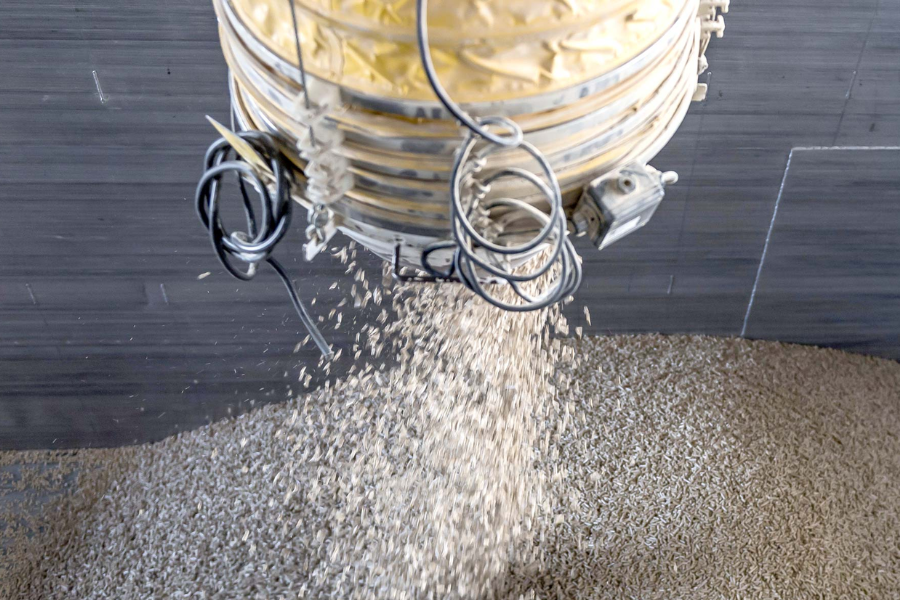Pelletierung in Modern Industries: How It’s Transforming Agriculture and Energy
Figuring out Pelletierung: The Interaction and Its Advantages
Pelletierung alludes to the change of unrefined components into little, uniform pellets. These pellets are simpler to make due, transport, and store because of their predictable size and shape. The interaction normally includes packing powdered or granular materials under tension, utilizing strategies like expulsion or press shaping.
The subsequent pellets offer improved actual properties, making them more proficient for modern use. Ordinarily applied in areas like horticulture, energy, and assembling,Pelletierung permits organizations to upgrade capacity, smooth out transportation, and lessen material waste. Furthermore, it upholds manageability endeavors by further developing fuel burning, prompting less outflows and expanded energy effectiveness from natural materials.
The Development of Pelletierung: From Beginning to Current Applications
Pelletierung began during the twentieth 100 years as a down to earth answer for working on the vehicle and treatment of mass materials. At first embraced by businesses, for example, agribusiness and mining, the cycle was particularly advantageous in creature feed creation, offering benefits in both capacity and nourishment.
As innovation advanced, so did pelletizing strategies. Progresses like the utilization of fastener specialists upgraded pellet sturdiness and quality, supporting effectiveness across different applications. By the last part of the 1980s, Pelletierung assumed a significant part in reusing endeavors, offering reasonable arrangements because of rising natural worries.
Today,Pelletierung is generally used across assorted areas, including energy creation and drugs, exhibiting its enduring effect on current assembling and maintainability rehearses.
Key Advantages of Pelletierung in Present day Industry
Pelletierung brings a few benefits that upgrade the productivity and reasonableness of materials in different businesses. One of the main advantages is the simplicity of dealing with. Not at all like free materials, pellets are more straightforward to ship, store, and make due.
Pelletized materials likewise offer better stream qualities, which prompts smoother activities in assembling processes, diminishing free time and helping generally efficiency. Their improved ignition properties are another significant benefit — pellets consume all the more uniformly and proficiently, bringing about energy investment funds and decreased discharges.
Besides,Pelletierung limits squander by changing over results into important, usable structures. This brings down natural effect as well as offers added benefit to materials that could some way or another go to squander.
The uniform size and thickness of pellets likewise add to higher item quality, guaranteeing consistency that fulfills industry guidelines and fulfills client requests.
The Pelletierung Interaction: Bit by bit Breakdown
Pelletierung changes natural substances into steady, uniform pellets through a multi-step process. It begins with size decrease, where enormous particles are ground into a fine powder, expanding surface region for more compelling restricting.
The following stage is molding, where intensity and dampness are added to the powdered material. This relax the particles, making them more straightforward to pack during the squeezing stage.
At the center of the interaction is the pellet factory or press, where the adapted material is constrained through little pass on openings under high tension, molding it into reduced pellets.
When shaped, the pellets go through cooling and drying stages. Cooling sets their design, while drying lessens dampness content, guaranteeing they are strong and prepared for capacity or transport.
At last, quality control checks guarantee that the pellets fulfill explicit guidelines for size, thickness, and consistency before they are bundled for use across various enterprises.
Normal Materials Utilized in the Pelletierung Cycle
Pelletierung is a profoundly versatile cycle that can work with a wide assortment of materials. Rural side-effects like straw, corn stover, and sawdust are often utilized, offering a maintainable method for lessening waste and transform it into significant assets.
Biomass materials, including wood chips and deposits from paper plants, are key in delivering eco-accommodating pellets. These pellets act as elective fills for warming frameworks or power age, adding to cleaner energy arrangements.
Creature feed is likewise usually pelletized to further develop edibility and supplement ingestion. Fixings like horse feed, grains, and soy dinner are consolidated to make supplement rich pellets explicitly intended for animals.
In modern settings, minerals and synthetics are frequently pelletized to upgrade dealing with effectiveness and guarantee consistency during creation.
The kind of material involved assumes a pivotal part in deciding the quality and use of the last pellets, making it fundamental to pick the right materials for every particular industry.
Businesses Profiting from Pelletierung: An Extensive Outline
Pelletierung is broadly utilized across various businesses, improving functional proficiency and item quality. In agribusiness, it’s utilized to create pelletized creature feed, which helps dietary benefit while limiting waste and improving stockpiling.
The biomass energy area depends intensely on wood pellets as an eco-accommodating fuel elective. These compacted natural materials smooth out operations as well as advance cleaner burning, making them ideal for power age.
In the drug business, Pelletierung is vital to making uniform medication plans. This cycle upholds controlled discharge, upgrading bioavailability and working on persistent consistence.
Fabricating areas additionally benefit from Pelletierung specially in creating plastics and metals. The utilization of pellets guarantees reliable dissolving properties and essentially brings down creation costs.
Indeed, even the food handling industry has embraced Pelletierung to create advantageous bites and dependable fixings. Every area use this adaptable procedure to address explicit difficulties, driving more prominent efficiency and supportability in their activities.
Arising Patterns and Developments Molding the Fate of Pelletierung
The Pelletierung business is going through huge change, powered by headways in innovation. New apparatus is making the cycle more effective, bringing about better pellets and less material waste.
Maintainability is a significant concentration for the future, with organizations progressively choosing eco-accommodating materials. The utilization of biodegradable covers and sustainable assets in pellet creation is turning out to be more broad, assisting with lessening the natural effect of the cycle.
Computerized innovation is likewise assuming a critical part in the development of Pelletierung. Mechanization and information driven examination are streamlining creation, empowering ongoing changes and guaranteeing steady pellet size and thickness.
Also, continuous investigation into elective energy sources is extending the likely applications for pelletized materials. From biofuels to creature feed, new open doors are arising as enterprises embrace these developments.
As these patterns keep on creating, organizations should remain lithe and adjust to keep up with their seriousness in this quickly developing business sector.
FAQs:
1. What is Pelletierung ?
Pelletierung, or pelletierung, is the process of transforming raw materials into small, dense pellets through methods like extrusion or pressing. These pellets are uniform in size and shape, making them easier to transport, store, and use across various industries.
2. What materials can be pelletized?
A wide range of materials can be pelletized, including agricultural by-products (straw, corn stover), biomass (wood chips, paper mill residues), animal feeds (grains, soy meal), and industrial materials (minerals and chemicals).
3. What industries use Pelletierung?
Pelletierung is used in many sectors, including agriculture (animal feed), energy (biomass fuel), pharmaceuticals (controlled-release medications), manufacturing (plastics and metals), and food processing (snacks and ingredients).
4. What are the benefits of Pelletierung ?
Pelletierung offers multiple advantages, such as improved handling, better flow characteristics, increased combustion efficiency, reduced waste, and consistent product quality.
5. What are the challenges of Pelletierung ?
Challenges include maintaining consistent pellet quality, high energy consumption during production, and meeting environmental regulations. These challenges can be addressed through stringent quality control, energy-efficient machinery, and adopting eco-friendly practices.
6. How can energy consumption be reduced in Pelletierung ?
Energy consumption can be minimized by investing in more efficient pelletizing machines, utilizing alternative energy sources, or implementing hybrid systems that combine conventional and renewable energy technologies.
7. What role does sustainability play in Pelletierung ?
Sustainability is increasingly important in Pelletierung . Companies are turning to eco-friendly
materials, biodegradable binders, and renewable resources, all of which help reduce the environmental impact of the process.
Conclusion
Pelletierung , or pelletierung, is a versatile process with applications across numerous industries, offering significant benefits in terms of efficiency, sustainability, and product quality. From agriculture and energy to pharmaceuticals and manufacturing, this process has become integral to improving material handling, enhancing combustion properties, and reducing waste.
However, challenges such as maintaining pellet consistency, energy consumption, and environmental compliance need to be addressed. By embracing innovations like energy-efficient machinery, digital technologies, and sustainable practices, businesses can optimize their Pelletierung processes while meeting the evolving demands of both the market and regulatory environments.
As industries continue to grow and adapt, pelletization remains a critical component in ensuring productivity, sustainability, and operational success.
Don’t miss out on updates and alerts – stay connected! England Buzz





